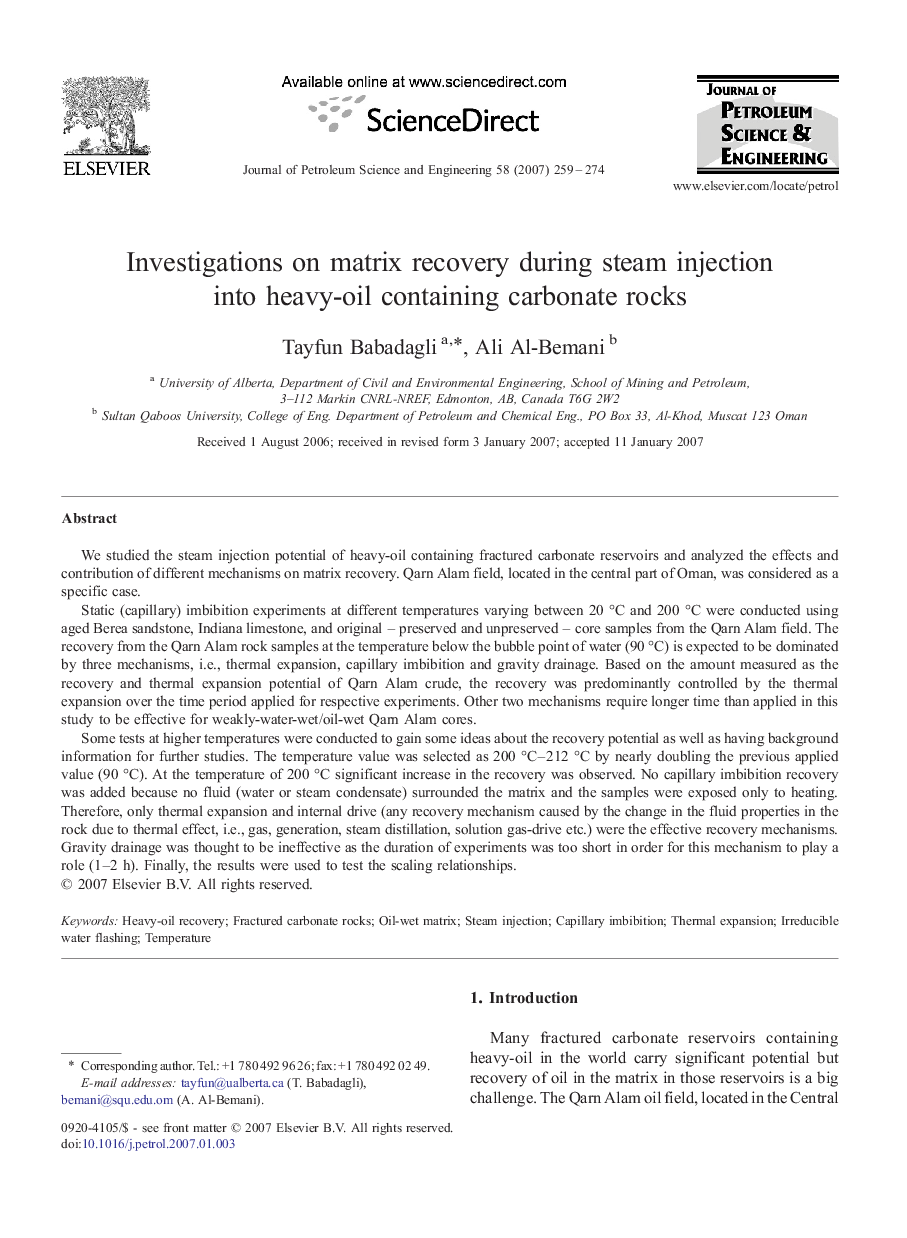| کد مقاله | کد نشریه | سال انتشار | مقاله انگلیسی | نسخه تمام متن |
|---|---|---|---|---|
| 1756350 | 1522890 | 2007 | 16 صفحه PDF | دانلود رایگان |

We studied the steam injection potential of heavy-oil containing fractured carbonate reservoirs and analyzed the effects and contribution of different mechanisms on matrix recovery. Qarn Alam field, located in the central part of Oman, was considered as a specific case.Static (capillary) imbibition experiments at different temperatures varying between 20 °C and 200 °C were conducted using aged Berea sandstone, Indiana limestone, and original – preserved and unpreserved – core samples from the Qarn Alam field. The recovery from the Qarn Alam rock samples at the temperature below the bubble point of water (90 °C) is expected to be dominated by three mechanisms, i.e., thermal expansion, capillary imbibition and gravity drainage. Based on the amount measured as the recovery and thermal expansion potential of Qarn Alam crude, the recovery was predominantly controlled by the thermal expansion over the time period applied for respective experiments. Other two mechanisms require longer time than applied in this study to be effective for weakly-water-wet/oil-wet Qarn Alam cores.Some tests at higher temperatures were conducted to gain some ideas about the recovery potential as well as having background information for further studies. The temperature value was selected as 200 °C–212 °C by nearly doubling the previous applied value (90 °C). At the temperature of 200 °C significant increase in the recovery was observed. No capillary imbibition recovery was added because no fluid (water or steam condensate) surrounded the matrix and the samples were exposed only to heating. Therefore, only thermal expansion and internal drive (any recovery mechanism caused by the change in the fluid properties in the rock due to thermal effect, i.e., gas, generation, steam distillation, solution gas-drive etc.) were the effective recovery mechanisms. Gravity drainage was thought to be ineffective as the duration of experiments was too short in order for this mechanism to play a role (1–2 h). Finally, the results were used to test the scaling relationships.
Journal: Journal of Petroleum Science and Engineering - Volume 58, Issues 1–2, August 2007, Pages 259–274